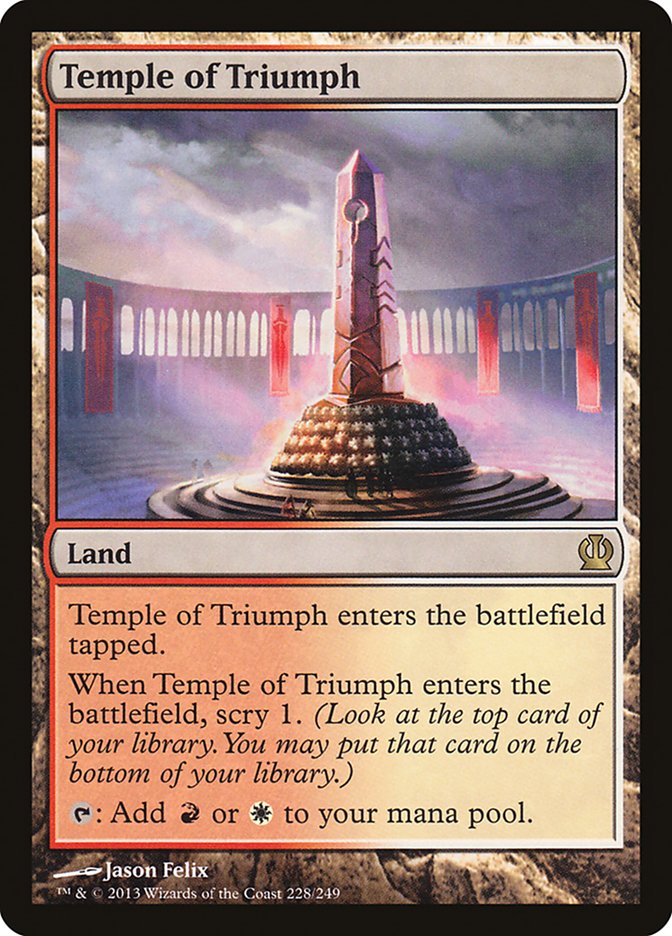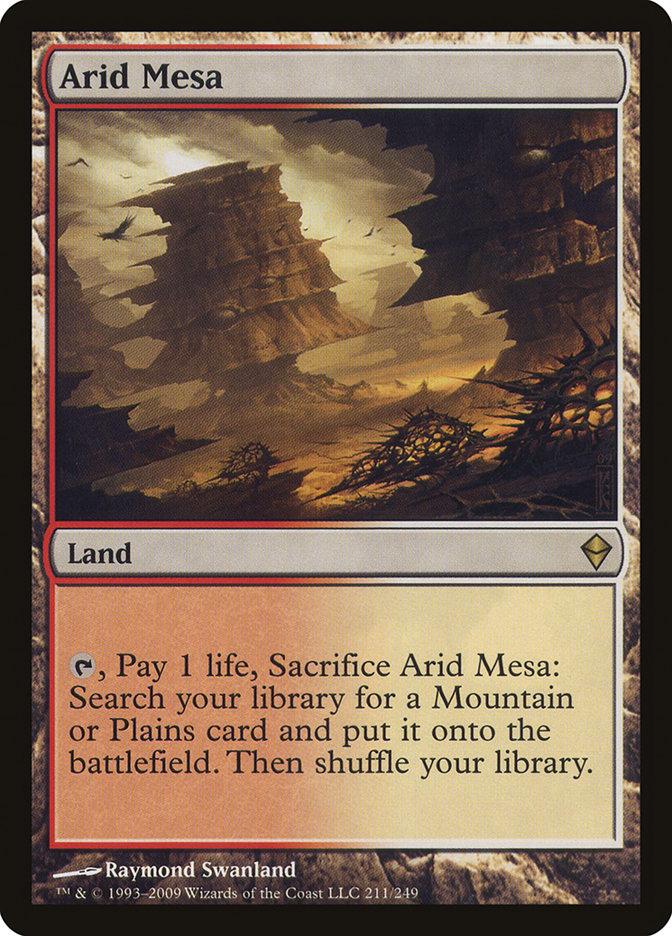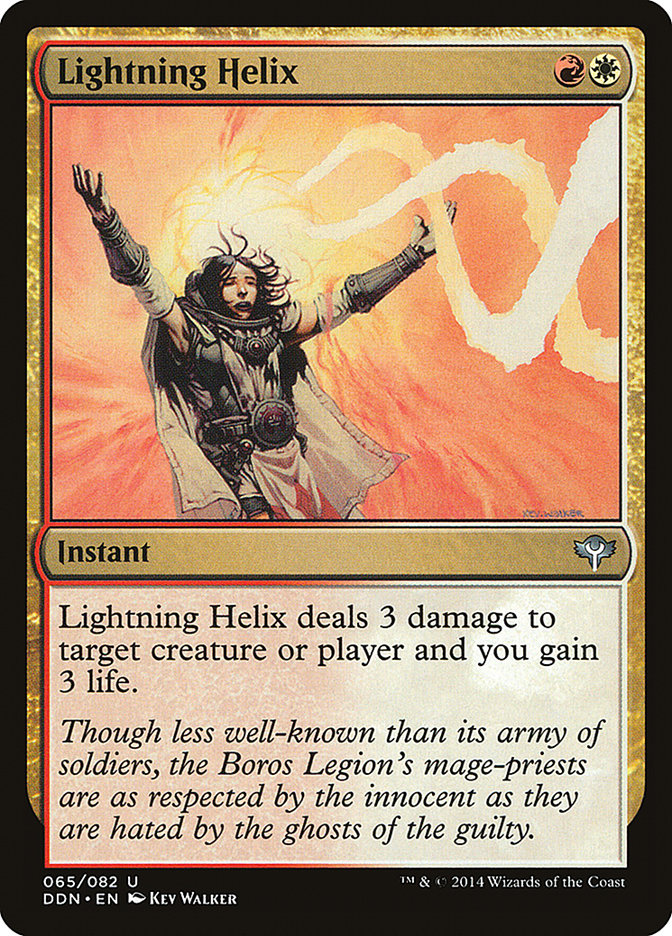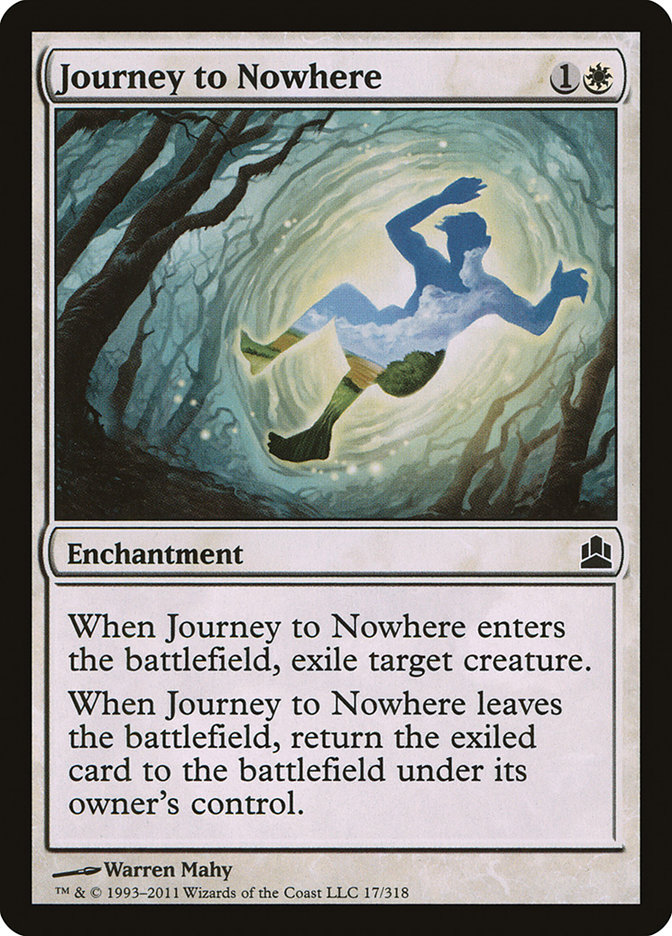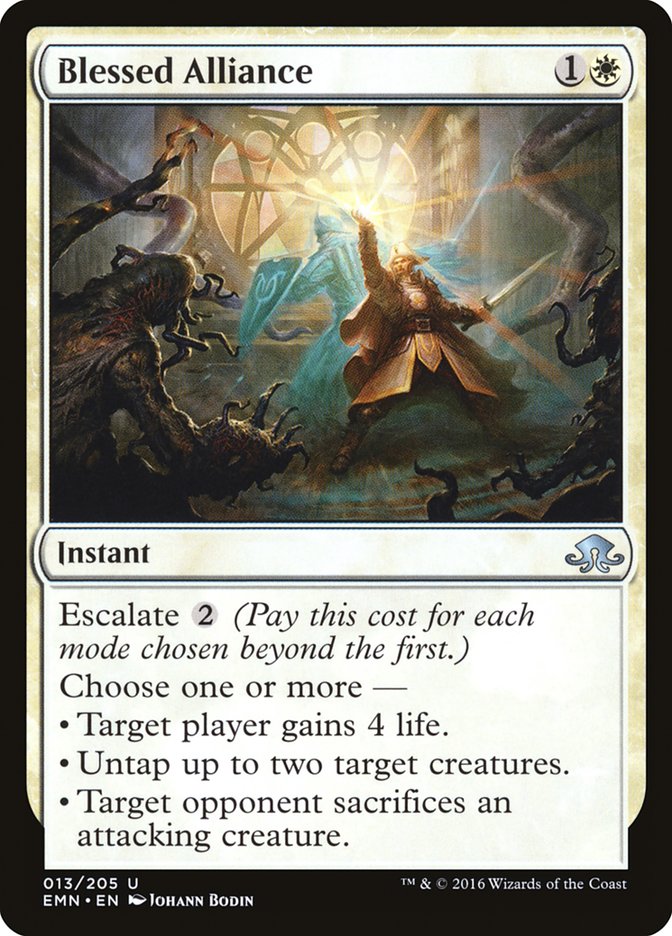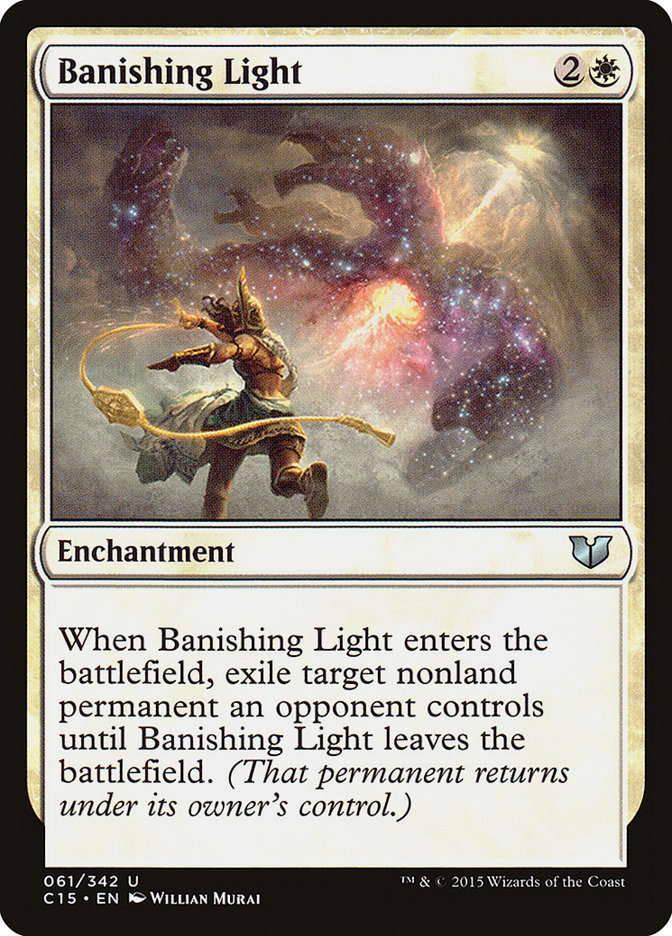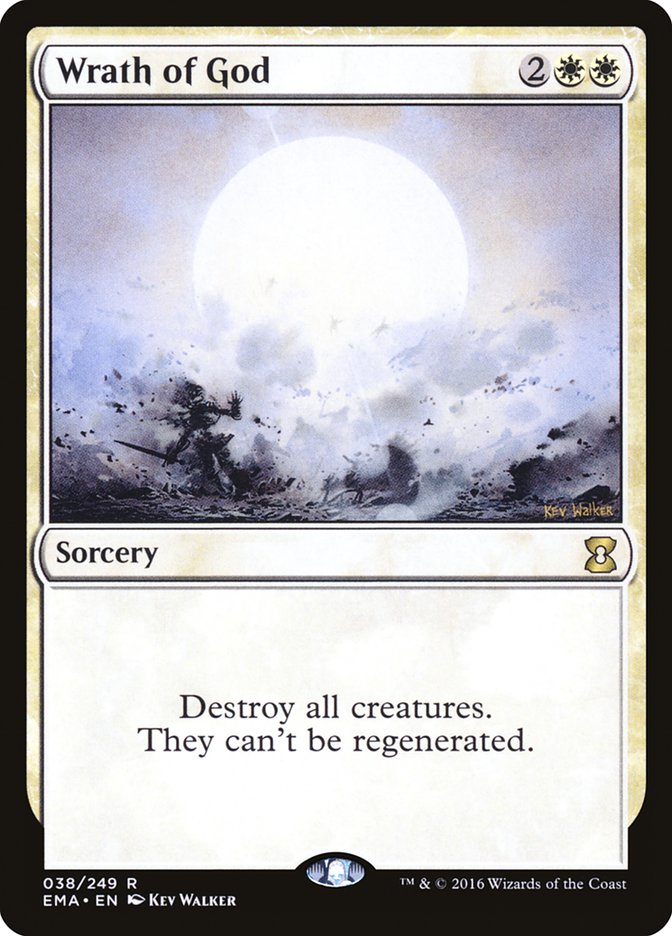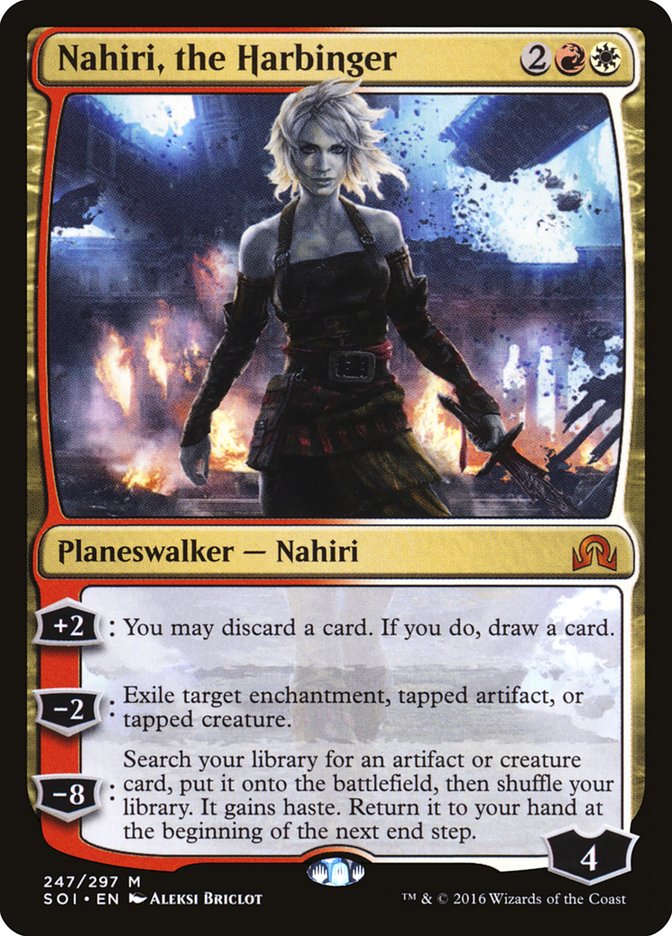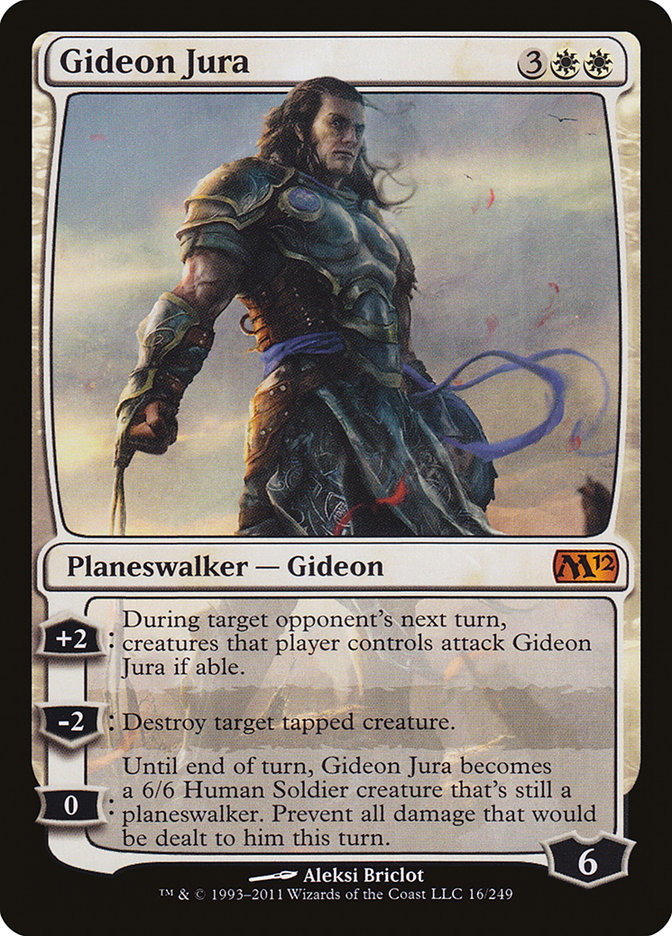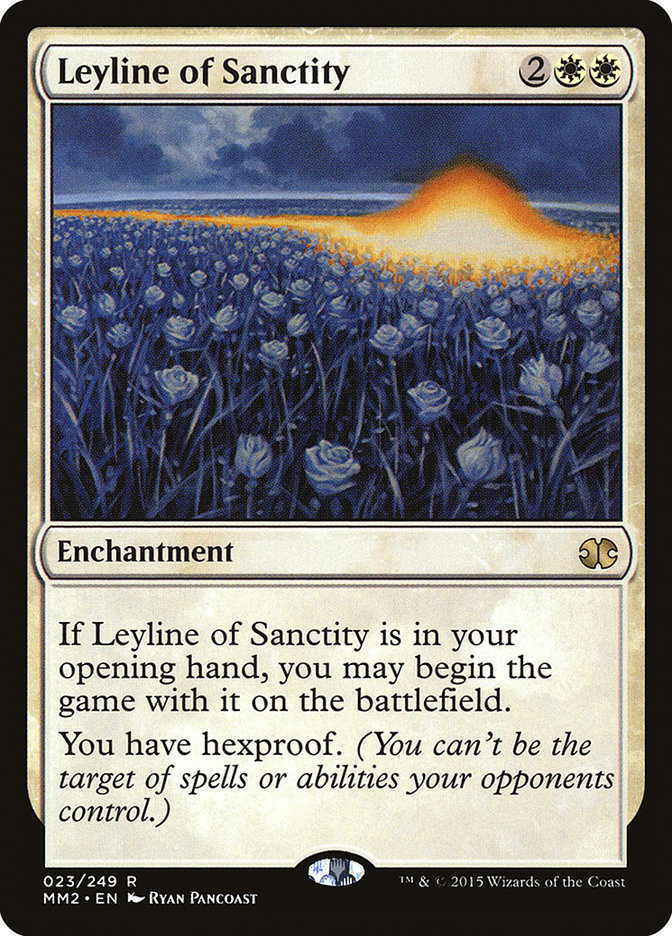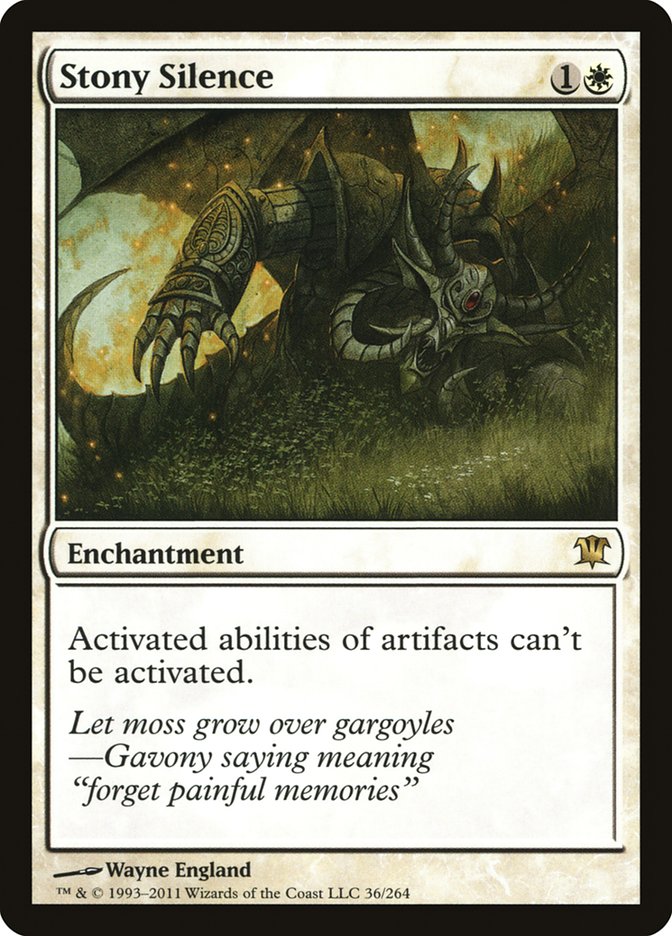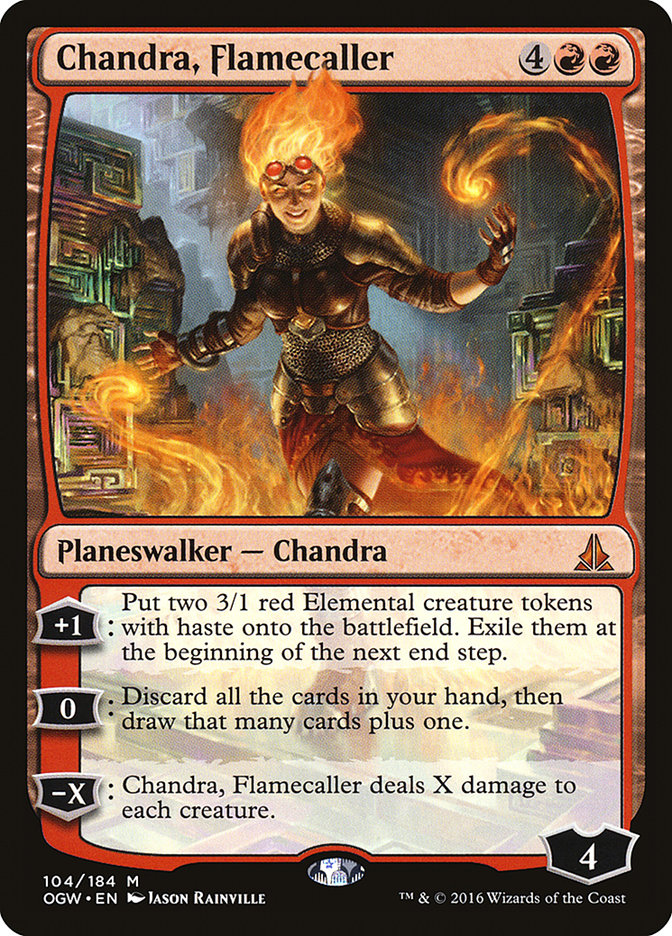Sun and Moon is a W/R Control deck that utilizes Chalice of the Void, Blood Moon, and multiple sweepers to slow the opponent down to allow planeswalkers to win the game. As far as the meaning of the name, the white mana symbol represents the “Sun” and Blood Moon represents the “Moon.” Red and white are also historically opposites in Magic, similar to the Sun and the Moon.
Creatures (5)
Planeswalkers (9)
Lands (25)
Spells (21)

I may be in the minority here, but personally I would classify Sun and Moon as a W/R Control deck and not a Prison deck. Now, Chalice of the Void and Blood Moon are two big pieces of a Prison deck, but I believe a true Prison deck would need more than two cards that can lock their opponent out, such as Ensnaring Bridge, Ghostly Prison, or various land destruction spells. While this distinction is minor, I believe it is important for your mindset when playing the deck. You won’t be as successful if you play Sun and Moon in such a way that you are only trying to lock your opponent out of the game instead of playing it as a control deck that can turn the corner quickly.
Let’s take an in-depth look at the different pieces of Sun and Moon.
The Manabase
Sun and Moon’s manabase is a big pull to the deck, as it is extremely consistent and reliable. A big reason for this is the full playset of Temple of Triumph, which is the best land in the deck. I believe all the Temples are underplayed in Modern, and having a scry land on turn 1 is a big part of this deck’s success. Having at least one and preferably two basic Plains is necessary, and the Arid Mesas should frequently be used to fetch them early before casting Blood Moon. Joining the 25 lands are four Simian Spirit Guides, accelerants that allow for the best draws in the deck.
The Lock
These are the two cards that most people will focus on when they see this deck in action, and for good reason. Chalice of the Void is most commonly set on one, as there are no cards in the entire deck that cost one mana. A Chalice set on one can generate a large amount of card advantage, frequently being anywhere from a two-for-one to a seven-for-one. Chalice is the reason why there are no Lightning Bolts or Path to Exiles in the decklist, even though they are two of the best cards in Modern.
Although Blood Moon can serve a similar role, I wouldn’t rely on it locking out opponents as much as you may think. I had some opponents actively fetching for basics on turn 1 after seeing my deck tech, but even without that, a Temple of Triumph on turn 1 can be a big giveaway. Even with that, one of Blood Moon’s biggest strengths is the ability to shut down creature-lands such as Inkmoth Nexus and Raging Ravine, which can be quite troublesome without having Blood Moon.
The Spot Removal
Having the lifegain from Lightning Helix is important enough that I almost don’t even miss having Lightning Bolt in the deck. It’s also the only instant-speed spell that can target, making it an easy four-of. Journey to Nowhere is the best two-mana removal spell that can get rid of large creatures such as Tarmogoyf, Thought-Knot Seer, and Tasigur, the Golden Fang. I’ve tried Declaration in Stone, but giving the opponent a Clue turned out to be pretty detrimental.
Blessed Alliance is a new addition that has completely impressed, especially with the rise of Infect, but it’s hard to find room in the main for more. Banishing Light was a last-minute addition that I actually didn’t test out, but it did relatively well for me. I wouldn’t want a second as of now, but it is nice to have the ability to exile a Liliana of the Veil or Oblivion Stone.
The Sweepers
Anger of the Gods is currently in a wonderful position in Modern and is secretly one of the best cards in the deck. There are still enough decks in the format where you don’t need an Anger of the Gods, though, which is why it’s only a three-of in the main, but the fourth can be found in the sideboard. Almost every current aggressive deck goes wide with creatures that are susceptible to Anger of the Gods, and it’s the single best card against Dredge, which is picking up in popularity after the printing of Cathartic Reunion.
With sweepers being so important against aggressive decks, two copies of Wrath of God make the maindeck. Wrath of God is also necessary to sweep up the creatures that do not always die to Anger of the Gods, which is most notably important against Bant Eldrazi. The prevalence of Bant Eldrazi is also the singular reason why there is a third Wrath of God in the sideboard.
The Planeswalkers
The new sets printed this year have been quite kind to Sun and Moon, as we now have planeswalkers that can finish the game quickly after we get control. Headlining this is Nahiri, the Harbinger, who is the main finisher of the deck. A four-mana planeswalker that can plus to six loyalty immediately and can add two loyalty a turn is an extremely good rate, especially when the ultimate ability only costs eight loyalty and is game-ending when paired with Emrakul, the Aeons Torn. Just like in Jeskai Control, she is the best threat and is responsible for ending most of the games.
Nahiri, the Harbinger isn’t the only new planeswalker in the deck, though, as Chandra, Torch of Defiance has been a welcome addition from Kaladesh. Although she gets sideboarded out in some of the most popular matchups, I was still quite impressed with her throughout the tournament. Chandra takes an extra turn to ultimate when compared to Nahiri, but the ultimate is still powerful enough that it is easy to end the game shortly thereafter. In multiple games I was using her plus ability to keep my opponent’s planeswalkers in check and allow Chandra or Nahiri to ultimate first.
Gideon Jura is one of the most underrated planeswalkers in Modern, and he was frequently an all-star for me. Five-mana spells need to be incredibly powerful to be able to see Modern play, and Gideon Jura fits the bill. Besides protecting me, Gideon also ensures our other two planeswalkers can ultimate, as the most common way in Modern to fight planeswalkers is to attack them.
The Sideboard
As I’m sure you have realized by now, Sun and Moon is a control deck that is tilted toward beating aggressive creature strategies, but there are plenty of other decks in Modern that we need to be prepared for. Leyline of Sanctity is an innocent-looking card that does wonders against opponents trying to target us with anything from discard spells and burn spells to even Valakut, the Molten Pinnacle. Rest in Peace is obviously a hammer of a card against Dredge, but it’s also serviceable as a Tarmogoyf removal spell and a way to stop Snapcaster Mage from flashing back spells.
I ended up cutting one Stony Silence from the list I usually play in favor of a Crumbling Dust in hopes that Crumbling Dust could help out against Tron and Valakut decks, as those are two difficult matchups for Sun and Moon, but I will be returning to three Stony Silences in the future. Stony Silence is just too important against Tron by shutting down Oblivion Stone, which is why I would still prefer three. Affinity is such an easy matchup already that I would maybe play one Stony Silence, if any, if it was just for Affinity, but I need them against Tron.
I honestly can’t say enough good things for Blessed Alliance. The card did a ton of work for me all weekend and I would have access to all four moving forward. Chandra, Flamecaller is a card that can be brought in as another sweeper against slower creature decks that go wide, such as Dredge, and as another threat that can end the game quickly against control. I have recently raised the sweeper count to be able to have up to seven after sideboard, and therefore I believe Chandra, Torch of Defiance would be the better sideboard threat moving forward. Elspeth, Sun’s Champion is mostly to fight Bant Eldrazi but is also a good threat against Jund and various blue control decks.
The Tournament
Although I had played a few hundred matches on Magic Online with Sun and Moon before #SCGMKE, I still can point to a poor sideboard plan in each one of my four losses over the weekend. My biggest regret from the tournament was not having a specific sideboard strategy set up, and all of my losses can be attributed to incorrect sideboarding. When your playtesting consists entirely of Magic Online, you can’t play a single matchup over and over, and with a metagame as vast as MTGO Modern, you may only play certain matchups a handful of times. Pair this with the fact that I like to enter Leagues with different cards to test them and sideboard differently in a matchup to see how good some cards are.
This led me to have a wealth of knowledge about different cards in a matchup, but not necessarily cards that are in my deck anymore. Before the tournament, I needed to sit down and think about the matchups I could face in Modern and make sure I knew exactly what my sideboard plan would be going into that specific match. It’s a part of preparing for a tournament, one that I often do, but I did not this time, as I was too confident from the amount of matches I had played with the deck, and I can point to a bad sideboard decision that cost me every single one of my losses. If I had the chance to play all the matches over again, I think I could have gone undefeated in the Swiss rounds, but that’s the point. You don’t get second chances. I skipped a step in the preparation process and it was my downfall.
And with that in mind, I’m going to go over a couple of the most popular matchups that you’ll find in Modern, especially the ones I played against at #SCGMKE, and go over how I would recommend sideboarding so that you won’t make the same mistake as I did going forward. I will only be covering a couple of matchups, so if there is a different one that you have a question about, let me know in the comments section below. First off, let’s use my slightly updated Sun and Moon list moving forward:
Creatures (5)
Planeswalkers (9)
Lands (25)
Spells (21)

Infect
In:
Out:
This was the matchup I was most prepared for, and it showed. Look no further if you want a deck that beats Infect, as Sun and Moon is a large favorite in the matchup. You can still lose to a turn 2 or 3 Become Immense with the wrong hand, which I did one game, but the other eight games against Infect I won easily, taking a total of nine poison damage between all eight.
Dredge
In:
Out:
When playing this matchup at #SCGMKE I instinctively took out Blood Moon, but after seeing cards like Nature’s Claim, Golgari Charm, Collective Brutality, and to a lesser extent Life from the Loam post-sideboard, I believe that to be wrong and I wouldn’t recommend cutting any Blood Moons in the matchup.
G/R Scapeshift
In:
Out:
This match was on camera, and while I haven’t gone back and watched it, I’m sure my deck looked terrible. Chalice of the Void is a pitiful card in Game 1 of the matchup, which naturally led me to sideboard out all four copies for Game 2, which wasn’t correct. This is a tough matchup for me to win, and I’m solely relying on Blood Moon and Leyline of Sanctity, both enchantments. They will be bringing in their enchantment removal, most likely Nature’s Claim, which costs one mana. Chalice of the Void can be used to protect the enchantments, which are the most important cards in the matchup.
Jund
In:
Out:
I do like one Rest in Peace in this matchup as a removal spell for Tarmogoyfs, but I sideboarded in more than one in my matchup and regretted it. One Gideon Jura comes out with the other planeswalkers coming in; attacking with Gideon Jura is a risky proposition into Terminate, as Gideon Jura is not as indestructible as his Standard counterpart. They probably sideboard out most if not all Terminates, though, which is why two Gideons still stay in the deck. Wrath of God is best against Tarmogoyf, but Anger of the Gods is the best against Kitchen Finks, so I like to stay with a split among them.
I believe Sun and Moon is the best control deck in Modern, so if you are a control player lost in the ocean of aggro decks, give Sun and Moon a try.
Comments from Last Week
I’m finishing my article this week by highlighting a comment from my last article, Winning with R/B Aggro, where I reviewed my Pro Tour Kaladesh predictions as well as went over the deck I played at #SCGRegionals. If you would like to be featured in next week’s Comments from Last Week section, then leave a question or comment below and be sure to come back next week to see if you made the cut!
The transform into R/B Control plan is actually great, though I think Goblin Dark-Dwellers is more of an impact card that leaves behind a relevant body over something like Liliana, the Last Hope.
– Josh Silvestri
I agree with you that Goblin Dark-Dwellers would be an upgrade over Liliana, the Last Hope in a strict R/B Control strategy, as the creatures that we have available to return to our hand are not amazing. However, I had Liliana in the deck as a way to fight small creature decks, especially those with one toughness, such as Veteran Motorist or Selfless Spirit. I wouldn’t necessarily want a Goblin Dark-Dwellers that cost five mana in those matchups.




